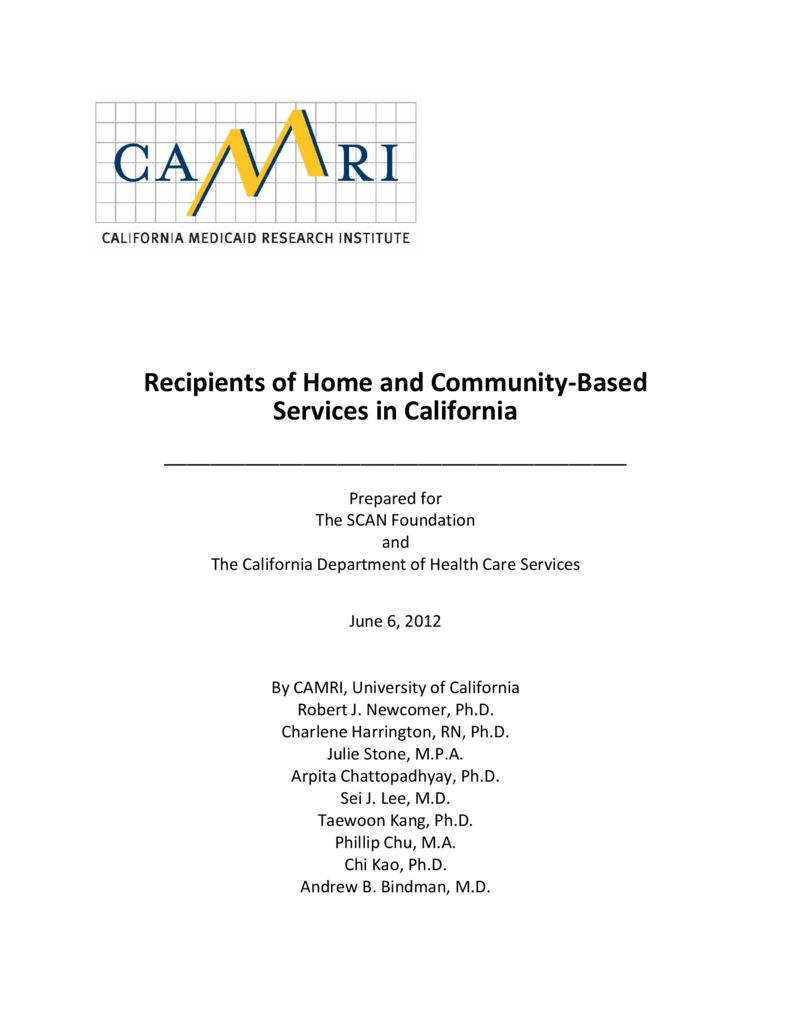CAMRI: Recipients of Home-and Community-Based Services in California
summary
The California Medicaid Research Institute (CAMRI) compiled a report that identifies Californians who receive home-and community-based support and what services they receive. The brief brings together available information spread across multiple state and federal data systems.
Date Updated: 06/06/2012Introduction
Home and community-based services (HCBS) refer to a broad range of health and social services needed by people with limited capacity for self-care. They are intended to help recipients with
disabilities remain either at home or in other community-based settings while maintaining or restoring an individual’s highest level of functioning and independence possible. HCBS are
intended to delay, and sometimes even prevent, entry into high-cost nursing facilities and other institutional facilities…
Download the publication for all visuals and complete references.
Continue Reading
This is the third report coming from the California Medicaid Research Institute (CAMRI) project entitled: Comprehensive Analysis of Home- and Community-Based Services in California. The report describes Medicare and Medi-Cal spending for those beneficiaries using long-term services and supports funded by Medi-Cal.
The California Medicaid Research Institute (CAMRI) developed an integrated and longitudinal database containing Medi-Cal and Medicare claims and assessment data of LTSS recipients in California in 2008. CAMRI’s integrated database provides a unique opportunity to look at characteristics and program spending across the entire care continuum for beneficiaries with LTSS needs within Medi-Cal and for dual eligibles across Medicare and Medi-Cal. This report focuses on LTSS use and spending in the eight duals demonstration counties.
In this paper, the National Committee for Quality Assurance (NCQA) discusses prior integration efforts; introduces a model for integrated entities and a framework for assessing and promoting quality of integrated care; and explores the challenges to implementing and achieving the goals of person-centered, integrated care for Medicare-Medicaid beneficiaries. They use the word “framework” to describe the key concepts underlying the structure and process measures; it can also be expanded to include the content of performance measures as companions to the structure and process measures.


